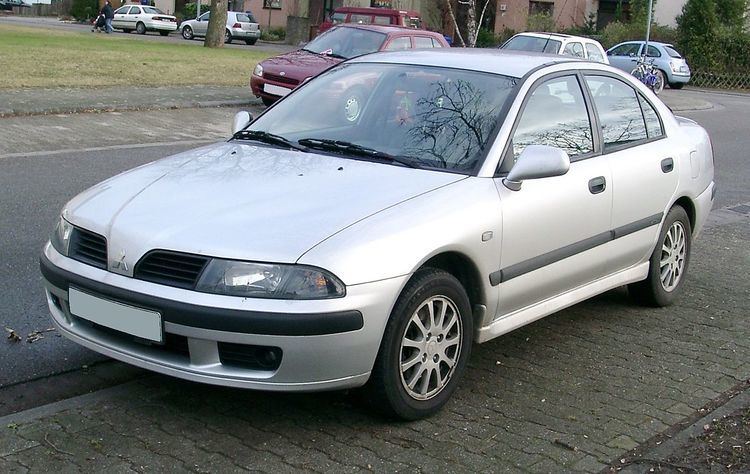Manufacturer Mitsubishi Designer Kiyoshi Honda | Production 1995–2004 | |
 | ||
Body style 4-door saloon5-door hatchback | ||
The Mitsubishi Carisma is a large family car produced for the European market by Mitsubishi from 1995 to 2004. The model name was derived from a combination of the English car and the Greek kharisma, meaning "divine gift". It was co-developed with Volvo, sharing its chassis with the first generation of the Volvo S40, and built at the NedCar factory in Born, Netherlands, which the two companies co-owned at the time. Over 350,000 were built during its production run. The car is judged to be a reliable, low-cost vehicle but lacked visual appeal and competed by price and size in two very competitive markets without a strong selling point.
Development
Available as a four-door saloon or a five-door hatchback styles only, it featured inline-four gasoline engines from 1.6 L (introduced later in life) to 1.8 L, a 1.8 L gasoline direct injection engine, and 90 hp (67 kW) 1.9 L turbodiesel powerplants sourced from Renault, later with the 100 hp (75 kW) 1.9 DI-D common rail diesel engine, the same as used in both Volvo and Renault cars.
In spite of its name, the Carisma had a fairly neutral design as a result of being Mitsubishi's first attempt to target the traditionally conservative European company car market. Even when receiving a midlife facelift in 1999 that characteristic was not improved. The car underwent a very light redesign again in 2002, with the main difference being the new headlights. The car was placed between the Lancer and the Galant, although after production ended, the Lancer took its place in Mitsubishi's European range.
In several markets where the Lancer was not available, the Evolution version was rebadged as the Mitsubishi Carisma GT. In Japan, the Carisma was sold at a specific retail chain called Car Plaza.
The chassis was also used by Proton to develop the Proton Waja.
